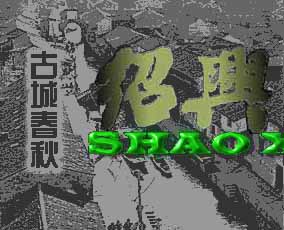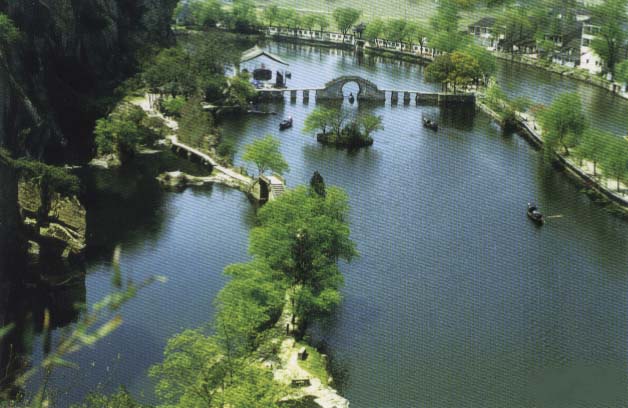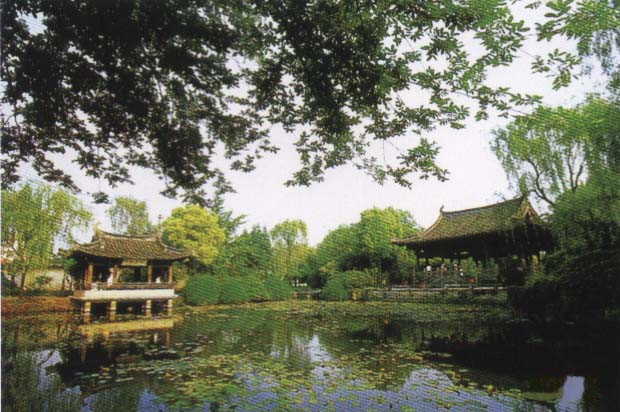 |
   |
|
Fushan (Fu Hill) Park
|

|
Fu Hill (location of Fushan Park), also named Long (Dragon) Hill, is like a scroll painting which depicts the long history of Shaoxing. A wealth of historical and cultural relics are preserved here. The hill with the other two hills stands like the three legs of tripod. People used to describe the scene as "coiling dragon and crouching tiger". With it, the ancient city of Shaoxing looks most magnificent. |
|
East Lake
|
|
|
|
Over hundreds of years, the slopes at East Lake were dug into precipices of grotesque forms. Some cliffs stand face to face, some suspend overhead as though they were about to fall, and some form a deep cave. One of the caves is called Tao Gong Cave. Tourists can enter the cave by "Wupen" boat. The cave is like a large well with stone walls piercing into sky. Light is projected through the opening above that a poet with a sence of humour described it as "One sits at the bottom of well and can see the skies; Don't say the lake is small, but it contains the heavens". |
|
Sheng Family Garden
|
|
|
The history of Sheng Family Garden recorded a story about a tragic marriage of the patriotic poet Lu You of the Southern Song Dynasty and his lover Tang Wang. It is said that Lu was forced to separate from his wife, Tang Wang and he was very sad about it. One day, more than ten years after the divorce, he happened to meet Tang Wang in the Sheng Family Garden. With mingled feelings of grief and joy, he wrote a poem entitled "the Phoenix-shaped Hairpin" on the wall of the garden. |
|
Temple And Mausoleum of Yu The Great
|

|
The Temple and Mausoleum of Yu the Great border on the foot of beautiful Kuaiji Mountain. The buildings of the temple and mausoleum are located along a hillslop with one higher than the other and nestle against the green hills and belt-like waters. With red walls, black tiles, carved beams and painted rafters, they are large and magnificent . The King Yu's Stone- Tablet and Tombstone bear epitaphs to show people's respects to the legendary hero--Yu the Great who was supposed to have performed stupendous feats in controlling flood. Visiting Yu's Mausoleum on the Kuaji Mountin is always a great draw. |
|
Qiu Jin's Former Residence
|

|
There is no denying the fact that she was an outstanding figure; She used to practise sword-playing every night." The poem described Qiu Jin(1875-1907) as a chinese national heroine of her age. Her former residence named Hechangtang is located at the southern foot of Ta hill and still well preserved. The architectural design of Hechangtang is a representation of the traditional style of dwellings in South-East-China during the Qing Dynasty. |
|
Lanting (Orchid Pavilion)
|

|
Lanting (Orchid Pavilion) is famous for "The Preface to the Orchid Pavilion Anthology", which was written by wang Xizhi, known as the Eastern-Jin's "calligrapher-sage", on March the third of 353 AD. The anthology has since been regarded as a treasure to be unequaled in value on the art of calligraphy. Therefore, the Orchid Pavilion has been well reputed as a sacred place of calligraphy for over 1600 years. The place nestles against green hills covered with luxuriant trees and dense bamboo groves. |

